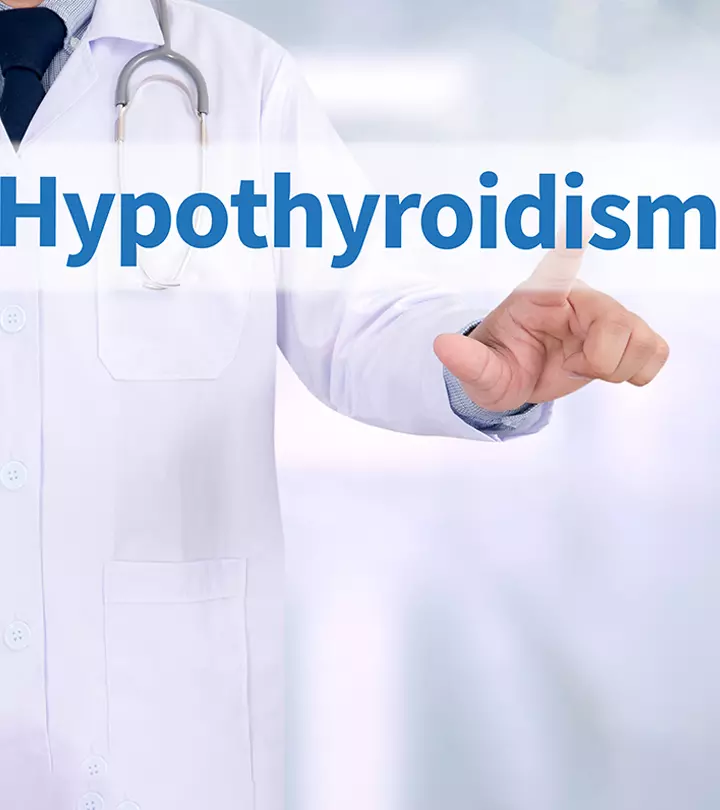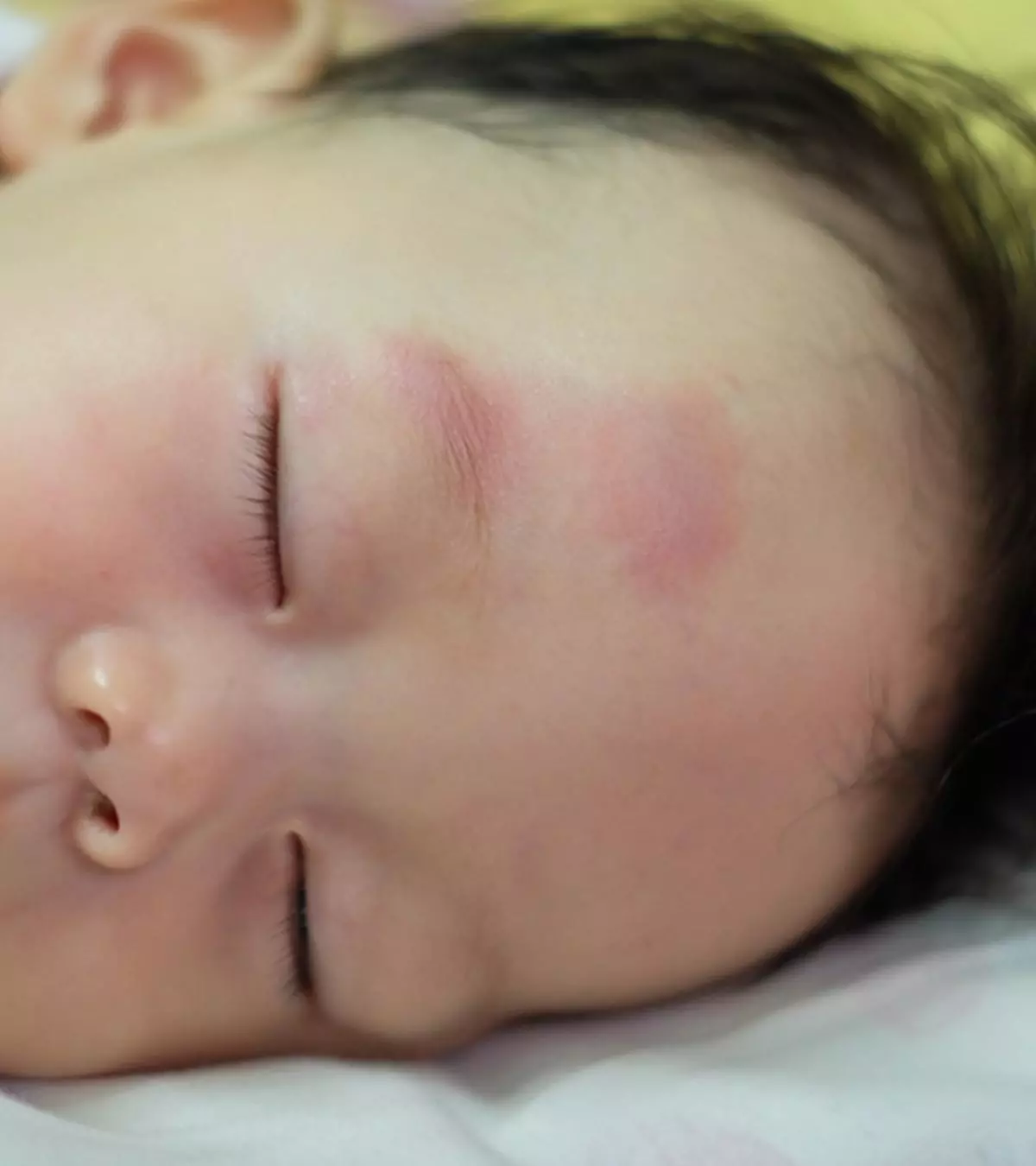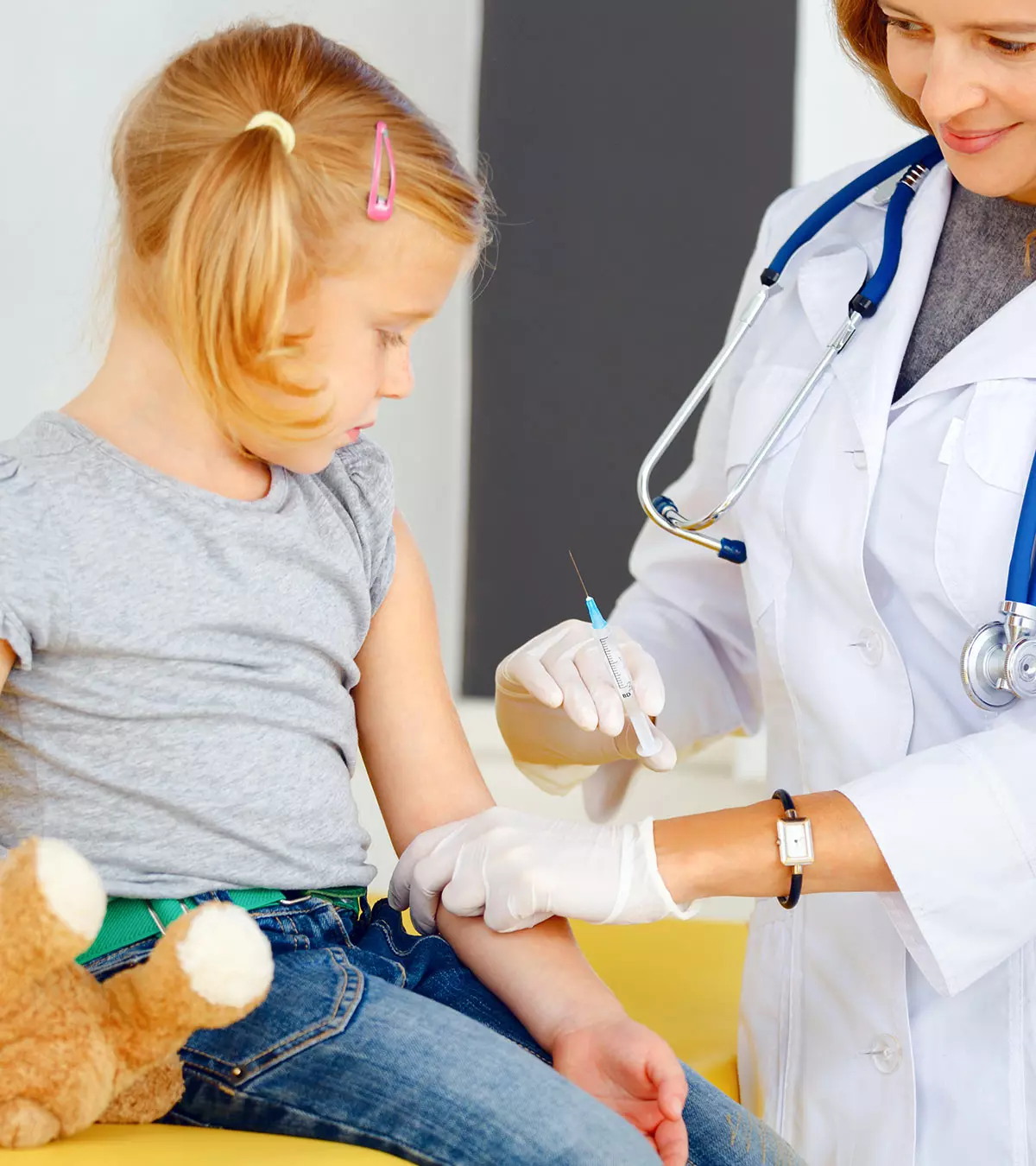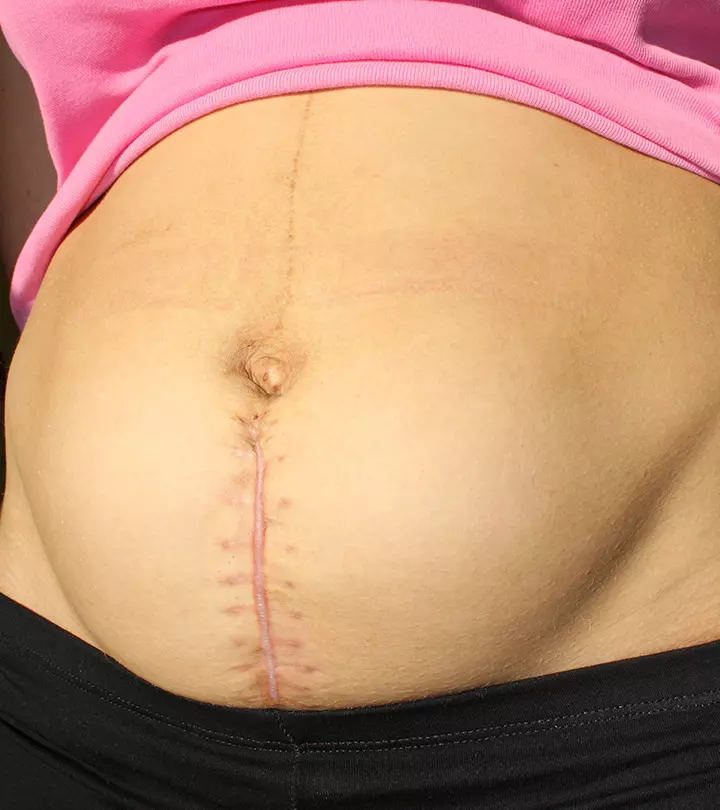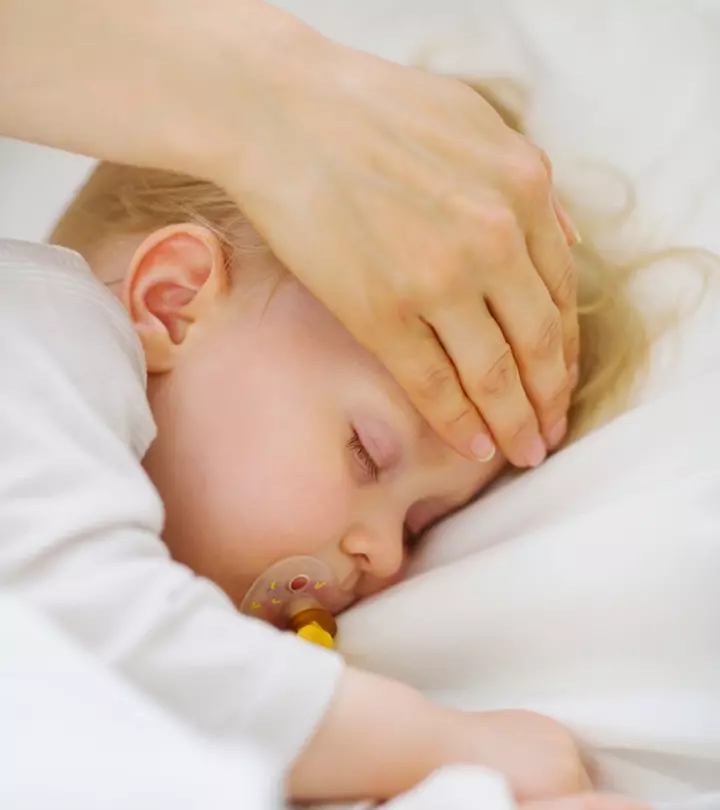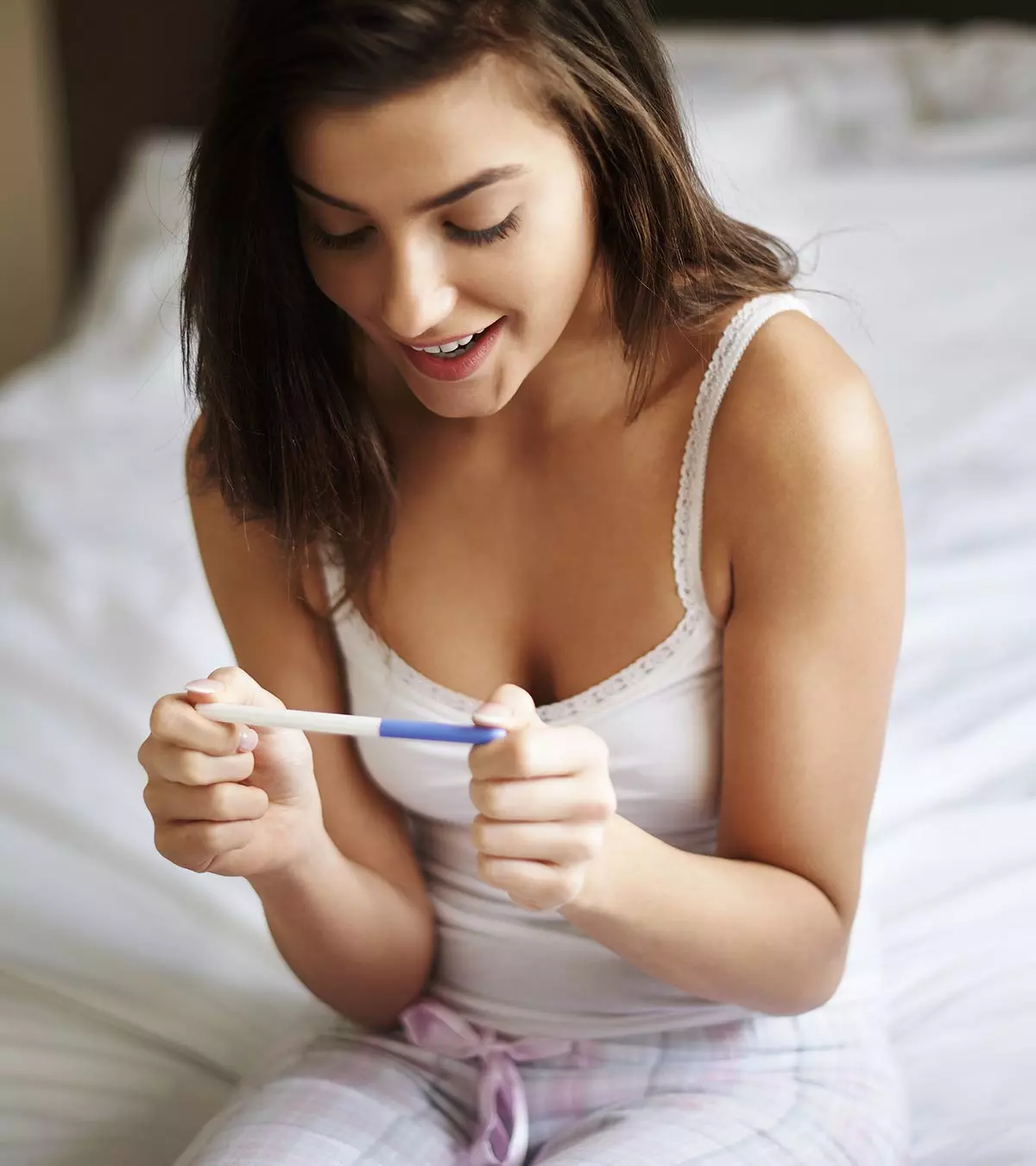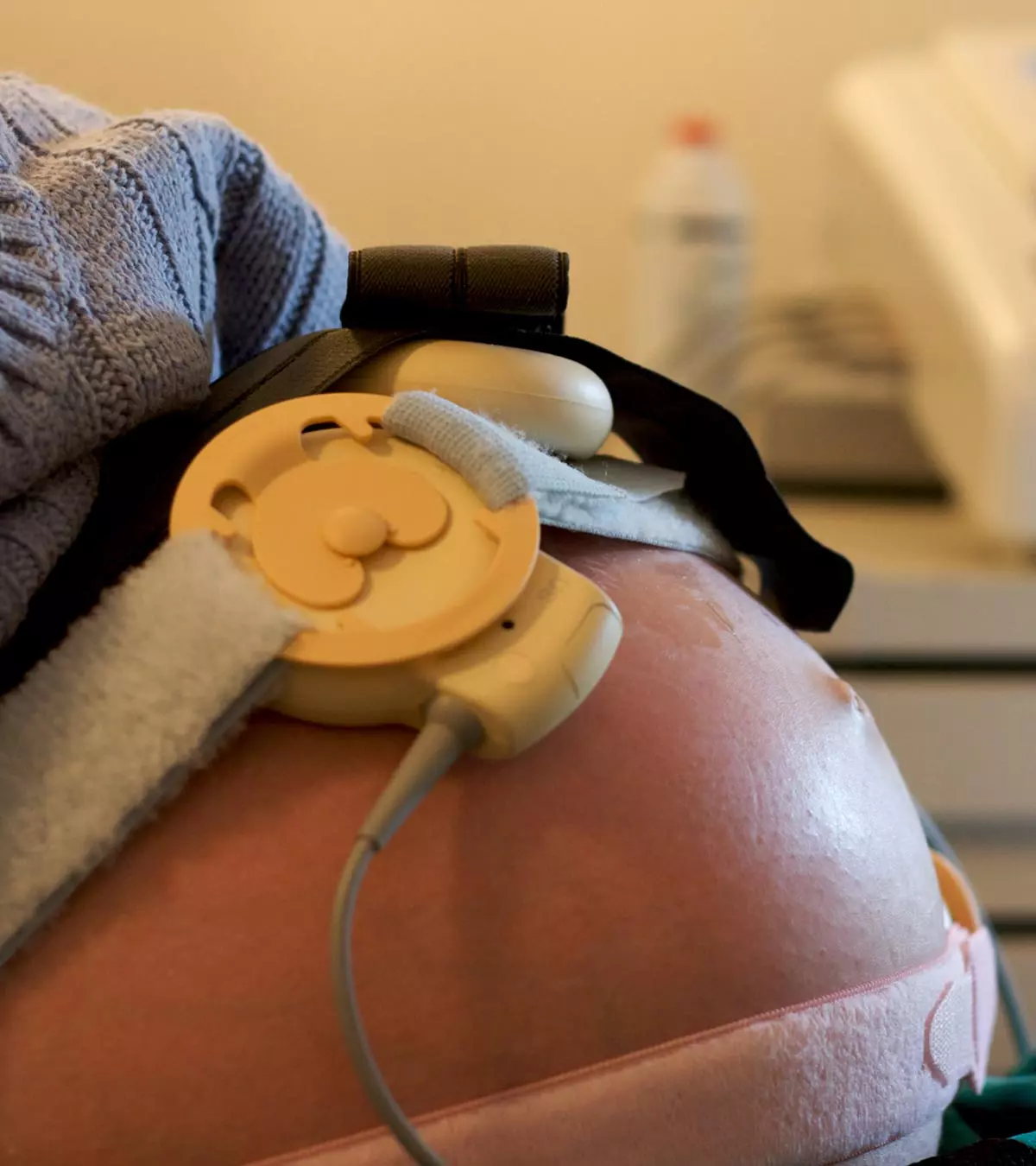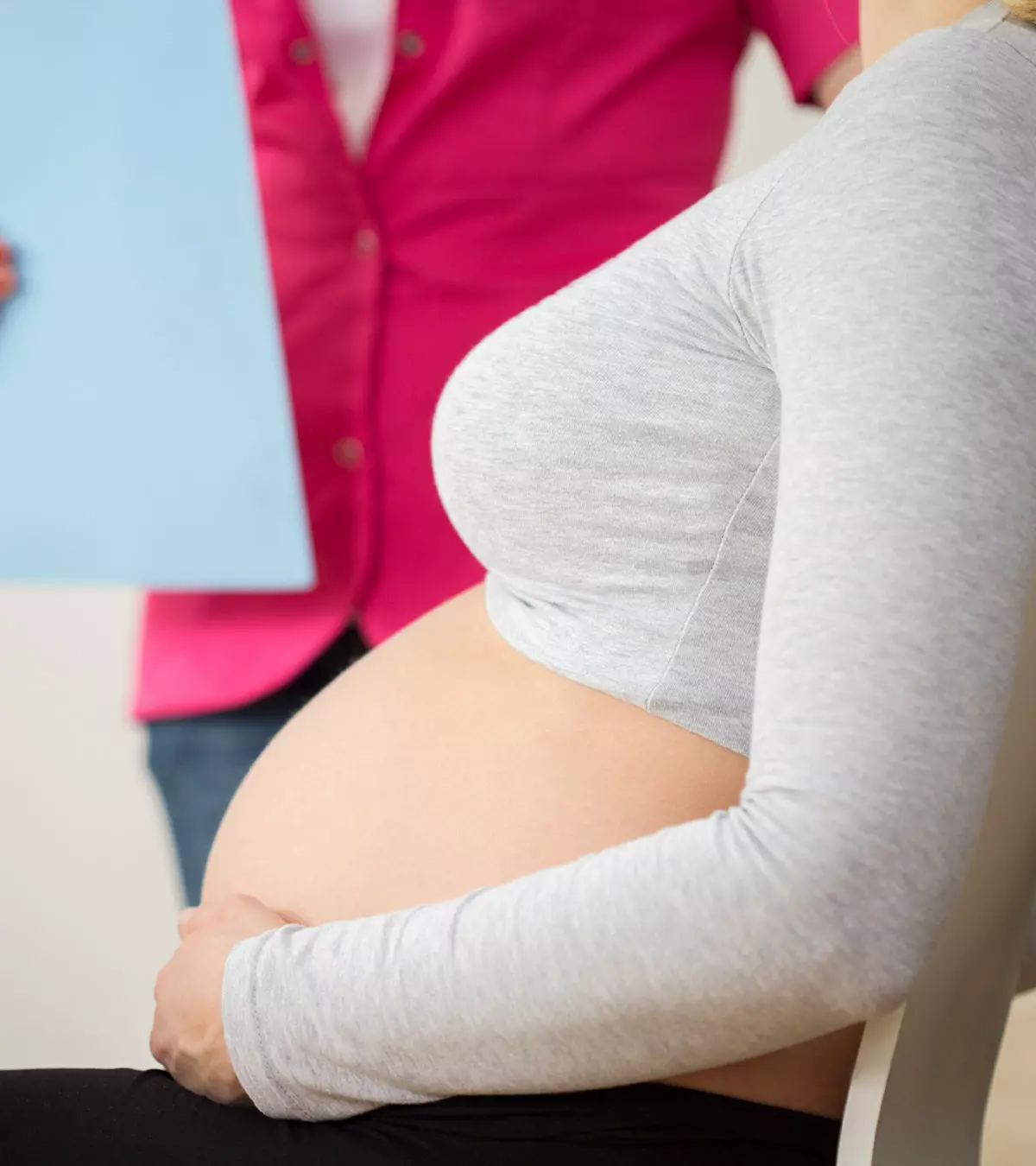
Image: iStock
A poxvirus (known as Molluscum contagiosum virus) causes the infection Molluscum contagiosum (1). Molluscum contagiosum during pregnancy may cause varied symptoms such as skin issues and white sores around your face, and the spores spread to other regions of your body.

Read this post to know about molluscum contagiosum in pregnancy, including its causes, symptoms, and treatment options.
Key Pointers
- Molluscum contagiosum is a viral skin ailment characterized by white sores or bumps on the skin.
- The predominant ways of the virus’s transmission are skin-to-skin contact, sexual contact, and sharing personal items with an infected individual.
- Pregnancy-related molluscum contagiosum can be treated topically by curettage, diathermy, cryotherapy, and laser treatment.
- Using cantharidin at home runs the danger of serious adverse effects; thus, it should only be used in the presence of a doctor.
- Topical creams such as podophyllotoxin should be avoided while pregnant.
What Is Molluscum Contagiosum?
Molluscum contagiosum is a viral skin infection caused by the virus Molluscum Contagiosum. The molluscum virus produces bumps or papules on the skin’s upper layer, which can be smooth, shiny, and fleshy (3).
Causes Of Molluscum Contagiosum During Pregnancy
Here are some of the common causes of Molluscum contagiosum:
1. Skin Contact
The infection spreads through skin contact. Avoid skin contact with an infected person. The virus survives on surfaces and comes in contact with the skin of a person infected with the Molluscum virus. The virus can spread by sharing towels, toys, utensils, etc.
2. Sexual Contact

Image: Shutterstock
Adults are more likely to be infected by a viral infection through sexual contact. Molluscum contagiosum is thus a sexually transmitted disease (STD). People with weakened immune systems may take longer to recover from it. (7).
3. Sharing Your Personal Belongings With An Infected Person
You can contract the disease if you share towels, clothes, and other items with an infected person.
The virus survives on surfaces of objects and contaminates them too. So, sterilize all surfaces and clothes to stay away from this infection.
Symptoms Of Molluscum Contagiosum During Pregnancy
If you are suffering from Molluscum infection during gestation, then you will notice a small group of painless lesions that exhibit the following characteristics:
- Shiny, smooth, and small in appearance.
- The color varies from white to pink to flesh-colored.
- Some of them are dome-shaped.
- The core of these lesions contains wax-like material.
- They appear all over the body, the face, abdomen, torso, arms, and legs.

Image: Shutterstock
- They also appear in the abdomen and genital areas.
 Quick fact
Quick factTreating Molluscum Contagiosum While Pregnant
If you contract lesions around the genital area (on or near the vulva, vagina, or anus), seek immediate medical attention, as lesions in these areas could lead to secondary bacterial infections or other complications (1).
Some treatment methods for Molluscum contagiosum during pregnancy include:
Topical Therapy
Some options for topical therapy are as follows:
1. Cryotherapy:
It is the process of freezing the lesion with liquid nitrogen. You will need several sessions of cryotherapy to remove the scars completely.
2. Laser therapy:
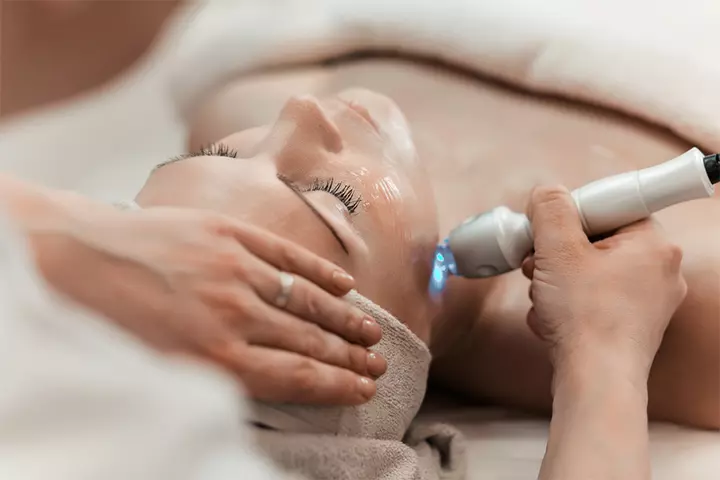
Image: Shutterstock
The technique involves using a powerful beam of light to destroy the cells that cause the spots. The treated area becomes discolored. However, the skin regains its normal color. But, you will have to undergo a couple of laser therapy sessions to get rid of scars completely.
3. Diathermy:
The process uses heat to remove the spots. The doctor will give you local anesthesia to numb the area. Later on, a heated electrical device is used to burn off the spots.
4. Curettage:
It is the process of removing the spots by piercing with a metal or curette. The doctor will place you under local anesthesia during the treatment.
These options can, however, result in post-procedural pain, irritation, and scarring.
 Quick fact
Quick factA Few Other Treatment Options
Avoid scratching the affected area. Scratching or scraping the affected skin could cause a bacterial infection. Scratching also increases the risk of spreading the infection. You can use some other treatment options like:

Image: Shutterstock
- Iodine
- Salicylic acid
- Potassium hydroxide
- Tretinoin
- Cantharidin
- Imiquimod (T-cell modifier) (1)
Here is a word of caution for all you new mommies-to-be. Podophyllotoxin cream (0.5%) is not good for pregnant women because of presumed toxicity to the fetus, so do not use it. Before opting for any treatment options; do consult your doctor/obstetrics (gynecology expert). Also, treat each lesion individually as the therapeutic effect is localized.
Caution
Cantharidin is to be applied in a doctor’s office only. There’s a risk of serious side effects, such as deep chemical burns, intense pain, and scarring if the product is procured online and applied at home (6).
Frequently Asked Questions
1. Can a baby be born with molluscum contagiosum?
Yes, a baby can be born with molluscum contagiosum. The infection transmits from the mother to the fetus in the uterus or through the vagina during birth (2).
2. What can be mistaken for molluscum contagiosum?
The symptoms of molluscum contagiosum can often be confused with herpes, genital warts, or bacterial furuncles due to the appearance and location of the lesions (3) (4).
3. What natural remedies for Molluscum Contagiosum can be used during pregnancy?
Sinecatechin is a natural remedy for Molluscum Contagiosum that can be used during pregnancy. It is a botanical remedy made from green tea and approved by the FDA to treat warts and molluscum bumps, especially in the genital region. Consult your healthcare provider before using it, as it should be used on the condition that the potential benefits outweigh the risks (6)(8).
Molluscum contagiosum during pregnancy is a contagious viral skin infection that can spread through skin-to-skin contact. It can cause itchy lesions to appear anywhere on the skin that tends to self-resolve with time. However, you should seek prompt medical guidance if the lesions appear around the genital area. Cryotherapy, laser therapy, and curettage are some of the treatment modalities that your doctor can suggest. However, these procedures may cause pain, irritation, and scarring. Topical use of salicylic acid, iodine, and potassium hydroxide is another option you may consider after consulting a dermatology expert.
Infographic: Management Of Molluscum Contagiosum In Pregnancy
Molluscum contagiosum is a viral infection causing raised, pearl-like bumps on the skin; it can be contained by following simple measures. Therefore, if you want to prevent this infection and learn how to manage it during pregnancy, this infographic is worth reading. Illustration: Momjunction Design Team
Learn how to prevent the spread of molluscum contagiosum with these simple tips! Find out what to do to keep yourself and others safe.
References
- Clinical Overview of Molluscum Contagiosum.
https://www.cdc.gov/molluscum-contagiosum/hcp/clinical-overview/index.html - Congenital molluscum contagiosum.
https://www.ncbi.nlm.nih.gov/pmc/articles/PMC5804562/ - Molluscum Contagiosum.
https://medlineplus.gov/ency/article/000826.htm - Molluscum contagiosum venereum.
https://experts.umn.edu/en/publications/molluscum-contagiosum-venereum - Molluscum contagiosum.
https://www.cdc.gov/molluscum-contagiosum/about/index.html - Molluscum Contagiosum: Diagnosis And Treatment.
https://www.aad.org/public/diseases/a-z/molluscum-contagiosum-treatment - Molluscum contagiosum.
https://www.betterhealth.vic.gov.au/health/conditionsandtreatments/molluscum-contagiosum - Sinecatechins – Patient.
https://clinicalinfo.hiv.gov/en/drugs/sinecatechins/patient
Community Experiences
Join the conversation and become a part of our nurturing community! Share your stories, experiences, and insights to connect with fellow parents.
Read full bio of Dr. Prachi Benara
Read full bio of Ria Saha
Read full bio of Swati Patwal
Read full bio of Lorraine Teron








